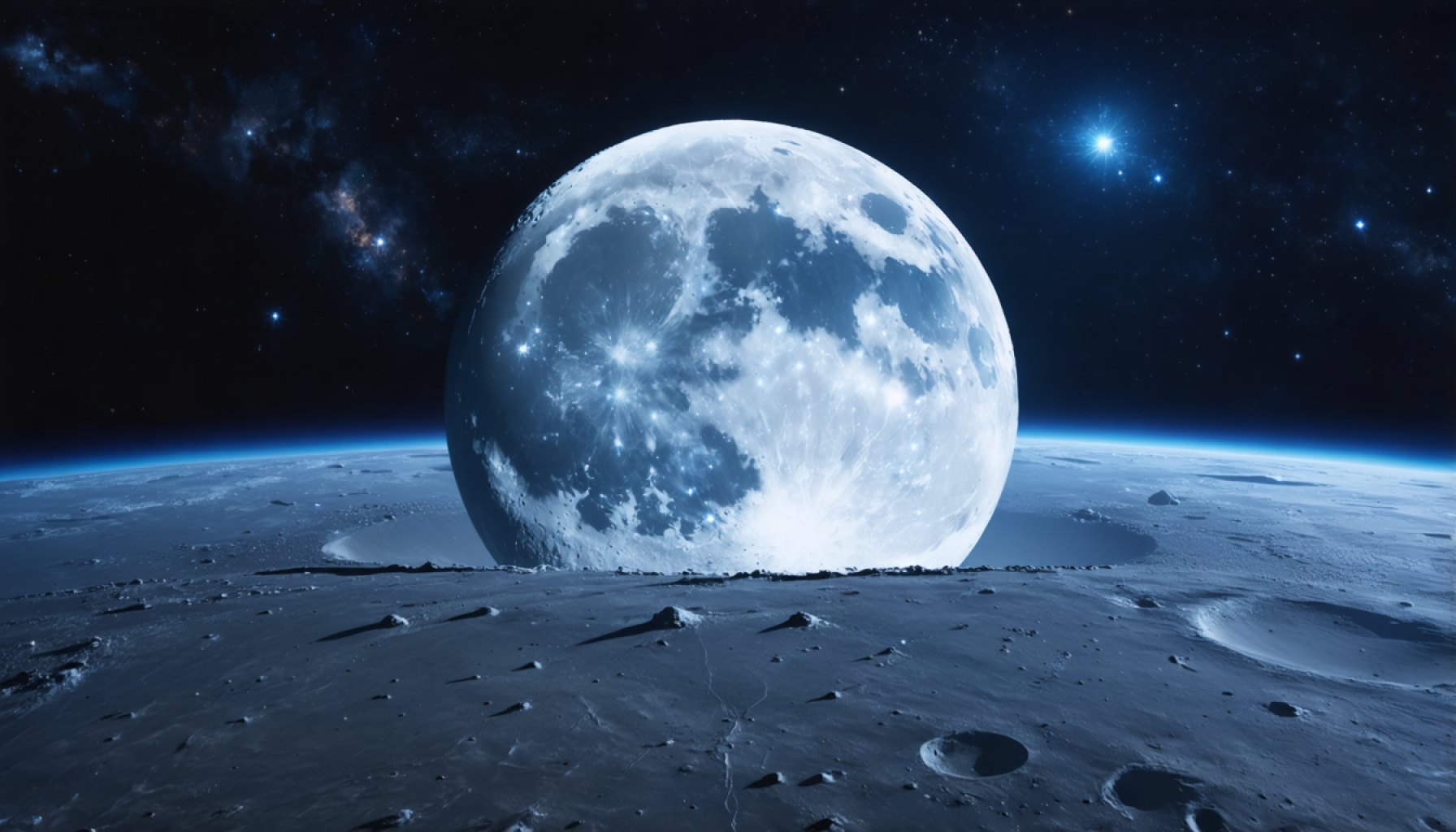- The Lunar Trailblazer satellite is set to explore water presence on the Moon, with potential implications for future lunar habitation.
- Launching aboard a SpaceX Falcon 9 rocket, the Colorado-crafted satellite aims to orbit the Moon and study its water cycle.
- The mission investigates how water can persist in the Moon’s extreme environment, targeting ice, frost, and hidden water in rocks.
- The satellite’s sophisticated design features technology shielded by an aluminum-carbon fiber structure and Kapton film for temperature regulation.
- Pioneered by planetary scientist Bethany Ehlmann, this mission aspires to reshape our approach to lunar exploration and resource utilization.
- This endeavor underscores human ingenuity and dedication to expanding scientific knowledge and exploring extraterrestrial resources.
The possibility of water on the Moon has tantalized scientists and space enthusiasts alike for decades. Now, a critical mission spearheaded by the compact and ambitious Lunar Trailblazer satellite is poised to unlock secrets hidden in the lunar shadows. This sleek, dishwasher-sized satellite, crafted in Colorado, embarks on its journey to Cape Canaveral to catch a ride on a SpaceX Falcon 9 rocket, aiming for a cosmic orbit around the Moon.
Imagine the barren, cratered landscape of our celestial neighbor, bathed alternately in blistering sunlight and freezing darkness. On this enigmatic surface, the Lunar Trailblazer’s explorers seek answers. They aim to decode the Moon’s water cycle: How does it persist in such an inhospitable environment? Might this water be a resource for future lunar inhabitants?
The satellite embodies simplicity cloaked in sophistication. Its core, concealed beneath a shiny aluminum-carbon fiber skin, bristles with technology, wrapped carefully with Kapton film—an elegant solution to the Moon’s severe temperature swings. Its job is to keep the delicate electronics comfortably balanced amid the harsh lunar extremes.
The brainchild of planetary science expert Bethany Ehlmann, the mission boldly questions the nature of lunar water. Rather than finding splashes of familiar liquid, the team envisages discovering ice, frost, and even water hidden within moon rocks, sheltered in sunless crevices. This could redefine the way future explorers interact with the lunar surface.
Beyond the marvel of trailblazing technology and scientific curiosity, this mission serves as a testament to human ingenuity and an exciting chapter in space exploration. As scientists widen their understanding of extraterrestrial resources, humanity inches closer to expanding its cosmic horizons, constantly propelled by the question: What else lies waiting among the stars?
The Moon’s Hidden Water: Unlocking Cosmic Resources for Future Exploration
How-To Steps & Life Hacks For Using Lunar Trailblazer Discoveries
1. Preparation for Future Missions: Insights from the Lunar Trailblazer could revolutionize how we plan lunar missions. Use the water maps generated by the satellite to prioritize landing zones with abundant water resources.
2. Resource Utilization: Develop technologies to extract water from lunar ice and rocks. This could support life support systems for astronauts and produce fuel for spacecraft, leveraging techniques like electrolysis to convert water into hydrogen and oxygen.
3. Study Environmental Dynamics: Build models to predict lunar water cycle changes. These models can guide the design of habitats that are more resilient to lunar conditions.
Real-World Use Cases
– Base Construction: Using local water resources can reduce the cost and complexity of establishing a sustainable lunar base.
– Fuel Generation: Transforming lunar water to rocket fuel could enable refueling stations on the Moon, supporting missions to Mars and beyond.
– Scientific Research: Understanding the Moon’s hydration processes can illuminate planetary formation theories and the history of the solar system.
Market Forecasts & Industry Trends
– The global space exploration market is projected to reach $558 billion by 2026, with an increasing focus on lunar exploration for economic, scientific, and strategic purposes.
– Private and governmental collaborations, like NASA’s Artemis program and initiatives by SpaceX, are expected to drive investments in lunar technologies.
Reviews & Comparisons
– Lunar Trailblazer vs. Past Missions: Unlike the Apollo missions, which aimed primarily for human exploration, the Trailblazer focuses on resource mapping, setting it apart through advanced instruments designed for water detection.
– Competitors: Other missions like China’s Chang’e series and Russia’s Luna missions also explore lunar water, but Trailblazer’s technology specifically focuses on mapping minute water distributions.
Controversies & Limitations
– Data Interpretation Challenges: Accurately interpreting spectral data to confirm water presence is complex and may lead to uncertainties.
– Resource Exploitation Debate: The ethical and environmental implications of extracting lunar resources are contentious, needing international regulation and cooperation.
Features, Specs, & Pricing
– Key instruments include a hyperspectral thermal imaging spectrometer, designed to analyze surface hydration.
– The mission has a relatively modest budget compared to other space ventures, emphasizing cost-effective innovation.
Security & Sustainability
– Material Use: Kapton film and carbon fiber are eco-friendly choices, reducing the satellite’s environmental footprint.
– Long-Term Sustainability: The findings may guide sustainable use of lunar resources, aligning with international space treaties.
Insights & Predictions
– Future Exploration: The data from the Lunar Trailblazer could catalyze more missions to the Moon, possibly leading to permanent human presence.
– Technological Advancements: As water extraction and utilization technologies improve, it might open the door to commercial lunar mining.
Tutorials & Compatibility
– Instrument Calibration: Ensure the instruments remain calibrated for accurate data collection as the satellite experiences harsh lunar conditions.
– Data Integration: Use software compatible with terrestrial mapping tools for seamless integration of lunar data.
Pros & Cons Overview
Pros:
– In-depth water mapping could pave the way for sustained lunar presence.
– Supports NASA’s broader lunar exploration goals.
Cons:
– High risk of technology failure in extreme lunar environments.
– Potential political and ethical challenges regarding resource extraction.
Actionable Recommendations
1. Stay Informed on Mission Progress: Follow NASA and partner agencies’ updates for real-time data releases.
2. Explore Online Courses: Engage with educational content on lunar science and technology to better understand potential career paths in space industries.
3. Invest in Space Tech Stocks: As the industry grows, consider investment options related to space exploration companies.
For more information, explore Nasa and SpaceX.
